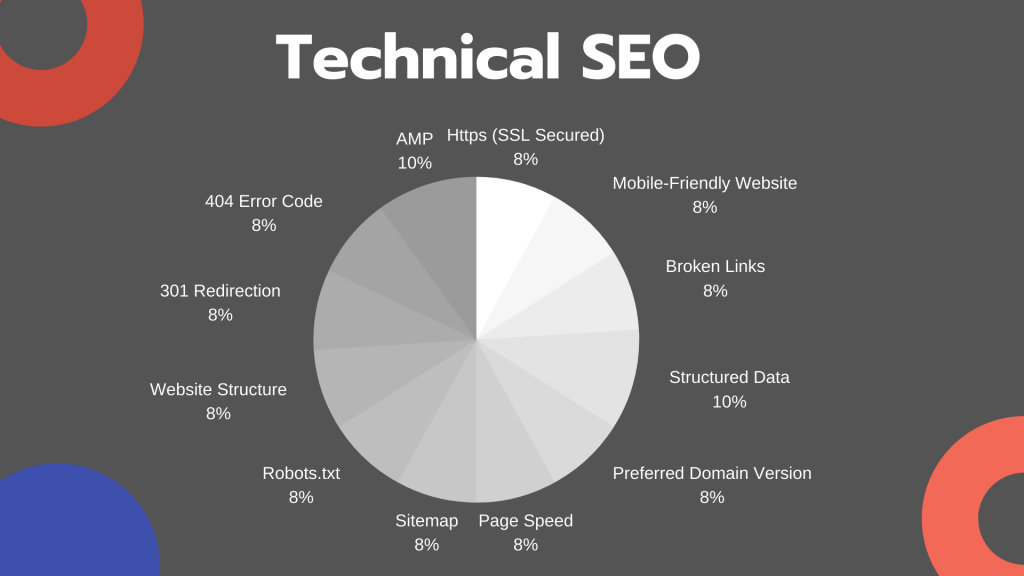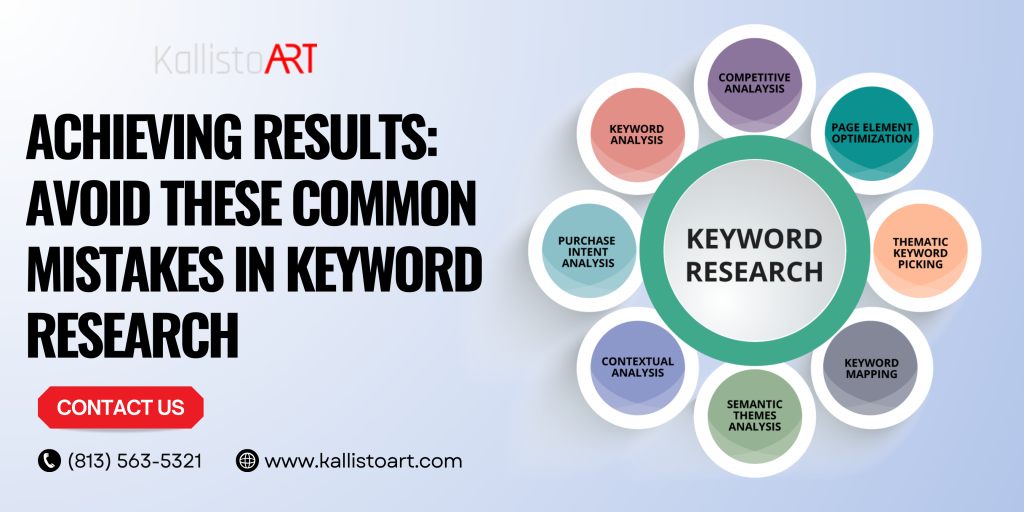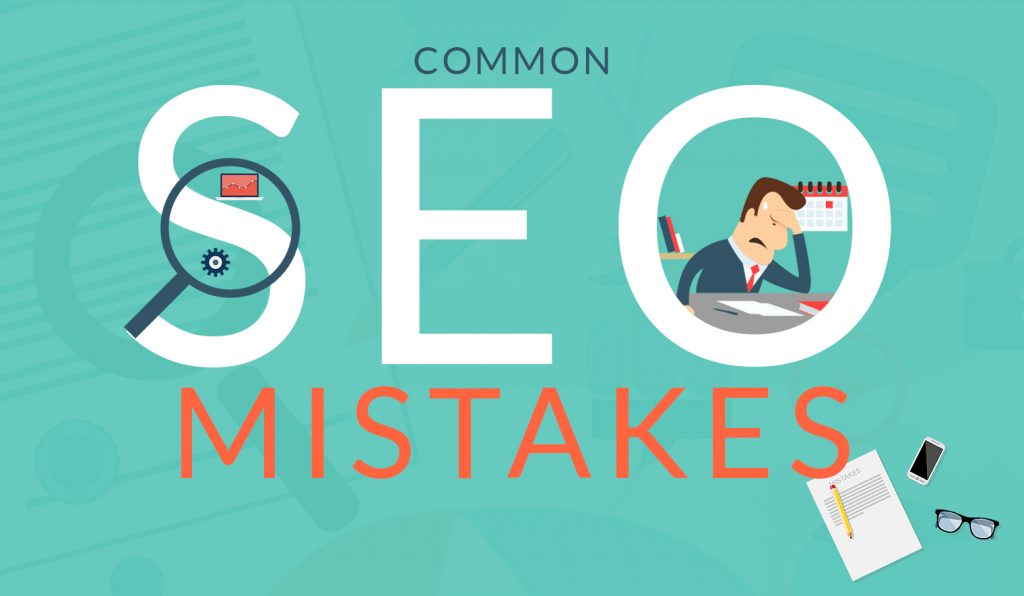How Technical SEO Is important for Your Website
Introduction
A. Definition of Technical SEO
In the vast digital realm, where every click matters, the term Technical SEO has emerged as the cornerstone of online success. It encompasses the intricate elements that determine your website’s visibility and performance in search engine results. At its core, Technical SEO is a meticulous approach to optimizing your website’s infrastructure and content, ensuring it aligns seamlessly with search engine algorithms.
B. Importance in the Digital Landscape
Now, imagine the online world as a bustling city, and your website as a storefront on a crowded street. Without the right techniques in place, your storefront might get lost in the hustle and bustle. This is where Technical SEO steps in as the guiding force, ensuring that your website not only stands out but also thrives amidst the competition.
As we embark on this journey to uncover the depths of Technical SEO, let’s focus our lens on a specific locale, magnifying the impact of these strategies. Enter the vibrant city of Tampa, Florida, where businesses strive to make their mark in the digital space. Here, the need for effective Technical SEO is accentuated, and the quest for the Best SEO Agency in Tampa, Florida becomes paramount.
Foundation of Technical SEO
In the digital realm, the foundation of Technical SEO is akin to the bedrock that supports a sturdy structure. This section delves deeper into the fundamental aspects that form the cornerstone of an effective Technical SEO strategy.
A. Website Architecture
1. Importance of a Well-Structured Site
A well-structured website isn’t just aesthetically pleasing; it directly impacts user experience and search engine ranking. Hierarchical organization and logical categorization of content not only make navigation seamless for visitors but also assist search engine crawlers in understanding the site’s hierarchy.
Implementing a clear and intuitive structure enhances user engagement and encourages longer dwell times, signaling to search engines that your content is valuable and relevant.
2. URL Hierarchy and Best Practices
Crafting URLs that mirror your site’s structure is crucial for both users and search engines. Clear, concise, and descriptive URLs not only aid in user understanding but also provide search engines with contextual information.
This subheading delves into the best practices of URL creation, emphasizing the importance of readability, keyword inclusion, and avoiding parameters that might confuse search engines.
B. Mobile Optimization
1. Responsive Design
As mobile usage continues to soar, responsive design becomes imperative. Responsive websites adapt seamlessly to different screen sizes, providing an optimal viewing experience across devices.
Exploring the significance of responsive design, this subheading discusses its impact on user satisfaction, bounce rates, and how search engines prioritize mobile-friendly websites in their rankings.
2. Mobile Page Speed
Mobile users demand swift loading times. This aspect isn’t just crucial for user satisfaction but is a key ranking factor for search engines. Optimizing images, minimizing redirects, and leveraging browser caching are among the strategies explored to enhance mobile page speed.
Understanding and implementing these mobile optimization techniques ensures your website remains competitive in an increasingly mobile-centric digital landscape.
In essence, the foundation of Technical SEO lies in the meticulous structuring of your website and its adaptability to the mobile landscape. By mastering these fundamental aspects, you lay the groundwork for a website that not only delights users but also earns favor with search engines, propelling your online presence to new heights.
Gain Digital Success with Tampa, Florida’s Top SEO Services! Boost Your online Presence Right Now!
Crawling and Indexing
In the vast realm of Search Engine Optimization (SEO), the process of crawling and indexing lays the foundation for your website’s visibility on search engine result pages. Let’s delve deeper into the intricacies of these crucial aspects, understanding how search engine crawlers navigate your site and how effective indexing ensures that your content is appropriately cataloged.
A. Search Engine Crawlers
1. How Crawlers Navigate Websites
Search engine crawlers, often referred to as bots or spiders, are automated programs designed to systematically browse the internet and collect information from web pages. Understanding how these crawlers navigate your website is pivotal for optimizing its visibility.
(A) Crawling Paths: Crawlers follow links to move from one page to another. Ensuring a logical and organized link structure is essential to guide crawlers efficiently through your site.
(B) Robots.txt: Utilizing the robots.txt file allows you to instruct crawlers on which areas of your site to crawl and which to avoid. Careful configuration of this file ensures that crawlers focus on relevant content.
2. Optimizing for Efficient Crawling
To make the most of search engine crawlers and enhance your website’s crawlability, consider the following strategies:
(A) Sitemap Optimization: Creating and submitting a comprehensive XML sitemap provides crawlers with a roadmap of your site’s structure. Regularly updating and submitting this sitemap ensures that new content is promptly discovered.
(B) Minimize Redirects: Excessive redirects can impede crawlers, leading to inefficient crawling. Minimize the use of redirects, and ensure that they are implemented judiciously.
B. XML Sitemaps
1. Creating an Effective Sitemap
A well-structured XML sitemap is akin to a detailed map that guides search engine crawlers through the labyrinth of your website. Crafting an effective sitemap involves:
(A) Inclusion of Key Pages: Ensure that all vital pages are included in the sitemap, emphasizing priority based on the importance of each page.
(B) Regular Updates: As your website evolves, so should your sitemap. Regularly update and submit it to search engines to reflect changes and additions.
2. Submitting Sitemaps to Search Engines
Once you have a meticulously crafted sitemap, the next step is to submit it to major search engines. This process ensures that search engines are aware of your site’s structure, leading to more efficient crawling and indexing.
(A) Google Search Console: Submit your sitemap through Google Search Console. Regularly monitor the indexing status and address any issues flagged by Google.
(B) Bing Webmaster Tools: For broader visibility, also submit your sitemap to Bing through Bing Webmaster Tools. This step ensures comprehensive coverage across major search engines.
By comprehending how crawlers operate and strategically optimizing your site’s structure and sitemap, you pave the way for effective crawling, enabling search engines to explore and index your content with precision. This meticulous approach ensures that your website stands out in the vast digital landscape, capturing the attention of both crawlers and, ultimately, your target audience.
On-Page Technical Elements
A. Title Tags and Meta Descriptions
1. Crafting SEO-Friendly Titles
In the realm of technical SEO, the significance of crafting SEO-friendly titles cannot be overstated. The title tag is not only a concise representation of your page’s content but a critical element that search engines use to understand and rank your content.
Best Practices:
- Include primary keywords at the beginning of the title.
- Keep titles under 60 characters for optimal display in search results.
- Ensure titles accurately reflect the content to enhance user experience.
Impact on SEO:
- Improved click-through rates (CTR) with compelling and relevant titles.
- Enhanced search engine ranking by aligning with user search intent.
2. Importance of Meta Descriptions
Meta descriptions are the brief snippets that provide a preview of your content on search engine results pages. While they may not directly influence rankings, well-crafted meta descriptions play a crucial role in enticing users to click on your link.
Optimization Techniques:
- Craft unique meta descriptions for each page.
- Use action-oriented language to encourage clicks.
- Incorporate relevant keywords for better search engine understanding.
User Engagement and SEO:
- Higher CTR with compelling meta descriptions.
- Reduced bounce rates as users find what they expect on the page.
B. Header Tags
1. H1, H2, H3…Hierarchy Matters
Header tags (H1, H2, H3, etc.) structure your content and provide a hierarchical order that search engines use to understand the organization of information on your page. Proper hierarchy enhances both user experience and SEO.
Guidelines for Header Tags:
- Use a single H1 tag for the main page title.
- Implement a logical hierarchy with H2 for section titles, H3 for sub-sections, and so on.
- Ensure headers accurately represent the content they introduce.
SEO Benefits:
- Improved content structure for better user understanding.
- Enhanced search engine comprehension of your page’s topical relevance.
2. Using Header Tags for SEO
Beyond organizational clarity, using header tags strategically can significantly impact your SEO efforts. Search engines use these tags to identify the main topics on your page, influencing how they rank and display your content.
Strategies for SEO Optimization:
- Place important keywords in H1 and H2 tags where relevant.
- Utilize header tags to create a content outline that aligns with user intent.
- Avoid excessive use of header tags, maintaining a balance for readability.
SEO Impact:
- Improved keyword relevance and semantic understanding.
- Enhanced user experience through a well-structured and readable content layout.
Incorporating these on-page technical elements into your SEO strategy not only optimizes your website for search engines but also contributes to a more satisfying user experience. Remember, the goal is not just to appeal to algorithms but to provide valuable and accessible content for your audience.
Site Speed and Performance
A. Importance of Speed in SEO
1. User Experience Impact
In the digital age, where attention spans are shorter than ever, the speed at which your website loads is a critical factor in retaining visitors. User experience is directly correlated with site speed – a slow-loading website can result in frustrated users who are likely to abandon your site in search of faster alternatives.
Key Points:
- Bounce Rates: High bounce rates are often linked to slow-loading pages. Users are less patient and expect instantaneous results.
- User Satisfaction: A fast website contributes to a positive user experience, fostering satisfaction and potentially increasing engagement.
2. Google’s PageSpeed Insights
Google, being the predominant search engine, considers site speed as one of its ranking factors. Websites with faster loading times are likely to rank higher in search engine results, enhancing their visibility.
Key Points:
- SEO Ranking Factor: Google’s algorithms favor faster websites, impacting your overall search engine ranking.
- Mobile Responsiveness: PageSpeed Insights also evaluates mobile performance, highlighting the importance of mobile-friendly sites.
HTTPS and Security
A. Secure Sockets Layer (SSL)
1. SEO Benefits of HTTPS
In the realm of SEO, the adoption of HTTPS is not merely a security measure; it also brings tangible benefits to your website’s search engine ranking. Search engines, particularly Google, prioritize secure websites in their algorithms. When your website is secured with SSL, it contributes positively to your SEO efforts, potentially improving your search visibility.
2. Ensuring Website Security
While the primary purpose of SSL is to encrypt data transmission, it also serves as a robust security layer for your website. Diving deeper into ensuring website security involves regularly updating SSL certificates, staying vigilant against vulnerabilities, and implementing security best practices. This multifaceted approach ensures that your website not only enjoys SEO advantages but also stands resilient against potential cyber threats.
B. Importance of HTTPS Beyond SEO
1. User Trust and Confidence
The padlock icon accompanying HTTPS in the browser’s address bar signals a secure connection. This visual cue fosters trust among your website visitors, assuring them that their data is transmitted securely. Trust is a critical element in user experience, and a secure website lays a strong foundation for building and maintaining that trust.
2. Data Integrity and Confidentiality
Beyond SEO considerations, HTTPS plays a pivotal role in maintaining the integrity and confidentiality of data. It prevents malicious actors from tampering with the data transmitted between the user’s browser and your server. Additionally, it encrypts sensitive information, safeguarding it from potential eavesdropping during transmission.
C. SEO Best Practices for HTTPS Implementation
1. Seamless Migration Strategies
Moving from HTTP to HTTPS requires meticulous planning to avoid disruptions. Implementing 301 redirects, updating internal links, and ensuring all resources are loaded securely are crucial steps. A well-executed migration minimizes the impact on your SEO rankings and user experience.
2. Mixed Content Mitigation
Addressing mixed content issues is imperative for a fully secure website. Mixed content occurs when both secure (HTTPS) and non-secure (HTTP) resources are loaded on a page, potentially compromising the security of the entire page. Identifying and resolving mixed content issues is essential for maintaining a secure and SEO-friendly website.
D. SSL Certificate Types and Selection
1. Types of SSL Certificates
Understanding the different types of SSL certificates – Extended Validation (EV), Organization Validated (OV), and Domain Validated (DV) – and their implications for security and user trust.
2. Factors in Certificate Selection
Choosing the right SSL certificate involves considering factors such as the level of trust required, the type of website, and the number of domains/subdomains. Each type of SSL certificate caters to specific security needs, and selecting the appropriate one is crucial for both security and SEO.
E. SEO Challenges and Solutions with HTTPS
1. Potential Ranking Fluctuations
Migrating to HTTPS may initially result in minor ranking fluctuations. Understanding the common challenges, such as temporary drops in rankings, and implementing proactive measures, such as thorough testing and monitoring, helps mitigate potential SEO challenges.
2. Continuous Monitoring and Maintenance
SEO in the context of HTTPS is an ongoing process. Regularly monitoring SSL certificate expiration, keeping abreast of industry best practices, and promptly addressing any security vulnerabilities ensure sustained SEO benefits and a secure online environment.
Gain Digital Success with Tampa, Florida’s Top SEO Services! Boost Your online Presence Right Now!
Schema Markup
A. Enhancing Search Results
1. Implementing Schema for Rich Snippets
In the realm of technical SEO, Schema Markup emerges as a powerful tool, adding a layer of context to your content that search engines can understand. By incorporating structured data through Schema Markup, you pave the way for rich snippets in search results, offering users more information at a glance.
Schema Markup isn’t just about making your content look good; it’s about providing search engines with explicit details about your content’s nature. Rich snippets can include star ratings, product prices, event details, and more, offering users a preview that goes beyond plain text.
Here are key points to consider when implementing Schema for rich snippets:
- Product Markup: If you’re running an e-commerce site, adding product schema can showcase essential details like price, availability, and reviews directly in the search results.
- Review Markup: Encourage users to leave reviews, and leverage review schema to display star ratings in search results, building trust and attracting clicks.
- Article Markup: For content-driven websites, article schema provides search engines with details like publication date, author, and featured images, making your content more appealing.
2. Commonly Used Schema Types
Understanding the variety of schema types available allows you to tailor your markup to the specifics of your content. Here are some commonly used schema types and their applications:
- Organization Schema: Showcase your company’s details, including logo, contact information, and social profiles, enhancing your brand presence in search results.
- Local Business Schema: If you have a physical location, local business schema provides crucial details like address, phone number, and business hours, increasing visibility for local searches.
- FAQ Schema: Enhance your content by adding FAQ schema, which displays frequently asked questions and their answers directly in the search results, improving user engagement.
- Event Schema: If your website promotes events, using event schema can showcase details like date, time, and venue directly in the search results, attracting attendees.
Implementing Schema Markup is not only about SEO; it’s about creating a more user-friendly experience in search results. As search engines evolve, leveraging Schema Markup becomes increasingly vital for ensuring your content stands out in the crowded digital space. Stay updated with schema changes and continuously optimize your markup to reap the full benefits of this powerful technical SEO strategy.
Conclusion
In conclusion, as we navigate the intricate realm of technical SEO, it becomes evident that the success of your website hinges on a strategic and comprehensive approach to optimization. As websites continue to proliferate, standing out amidst the digital clutter requires more than just captivating content and visually appealing design – it demands a robust technical foundation. For businesses aiming to elevate their online presence, implementing the insights shared here is paramount. And for those seeking expert guidance, partnering with the Best SEO Agency in Tampa, Florida can be a transformative step. With their specialized knowledge and hands-on experience, such agencies can navigate the complexities of technical SEO, ensuring your website not only meets but exceeds the evolving standards of search engine algorithms. Embrace these strategies, stay informed, and consider the invaluable assistance of a top-notch SEO agency to propel your website towards sustained success in the dynamic online landscape.
Frequently Asked Questions (FAQs)
Q1. How Does Technical SEO Differ from On-Page SEO?
Ans: Technical SEO primarily focuses on the infrastructure and technical aspects of a website, ensuring search engines can crawl and index it effectively. It involves tasks like optimizing site speed, improving crawlability, and implementing structured data. On the other hand, on-page SEO is about optimizing individual pages for relevant keywords, focusing on content quality, meta tags, and user experience.
Q2. What is the significance of Schema Markup in Technical SEO?
Ans: Schema markup is a structured data vocabulary that helps search engines understand the content on a webpage more comprehensively. It enhances the way your page appears in search results, providing rich snippets like star ratings, reviews, and other details. Utilizing schema markup can significantly improve click-through rates and overall visibility in search engine results.
Q3. How can I monitor my website’s technical health using Google Search Console?
Ans: Google Search Console is an invaluable tool for monitoring your website’s technical health. It provides insights into crawl errors, indexing status, and search performance. Regularly check for issues, review the performance reports, and address any errors promptly. Google Search Console helps you understand how search engines perceive and interact with your site.





